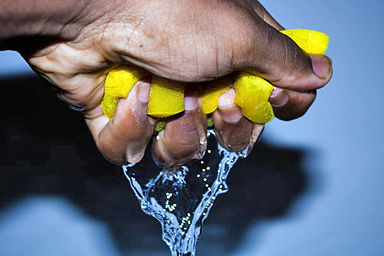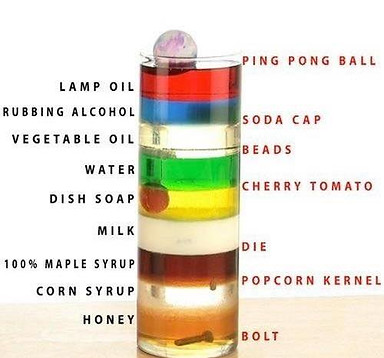
THE PATH OF LEAST RESISTANCE
Air behaves like a sponge. The warmer the air, the more water it can hold. The colder the air, the less water it retains. Warm air met with sudden cold releases its hidden store — wrung out like a soaked sponge, pouring out the water it was carrying all along.
This is the principle of condensation: a sudden shift in temperature reveals what was always present. Water becomes visible.
An atmospheric water generator applies this same law, using radiation, conduction, and convection to extract moisture from the air with minimal effort. It doesn’t fight nature; it flows with it. The entire system can run on just 12 volts DC.

This is coherence in practice: abundance accessed through alignment, not force. Poverty thrives on systems of resistance — extraction, struggle, and waste. Abundance thrives on the path of least resistance — honouring the laws already written into creation.
My water generator leverages the natural principals of radiation, conduction, and convection to extract water from the air, using the least amount of energy possible. The entire system runs on 12 volts DC.
For an atmospheric water generator to operate efficiently, the condensing chamber must always maintain a much lower temperature than the incoming air. When the machine is idle, this temperature differential is easy to achieve. But when hot air is being constantly processed, the challenge is sustaining that cold edge.
The greatest demand for cooling is at the bottom of the chamber, where the hot air first enters. How do you get dense, cold air to fall to the lowest point without expending unnecessary energy? The answer is to use the condensing column itself as a pipe.
The air inside the column is shielded from the rotational forces at work in the condensing chamber. This allows cold air to fall freely under its own weight, delivering cooling exactly where it is needed — not by force, but by alignment with gravity.
This is the genius of coherence: the system doesn’t fight itself. It uses what is already true — density, flow, and balance — to do the work.
The hydrogen bond that holds water molecules together is what gives water many of its unique properties — including its ability to resist temperature change. This is why the condensing column is immersed in a pool of freezing water. Water resists change; metal conducts it quickly. Together, they form a marriage of stability and efficiency — a system built on balance, not struggle.
Meanwhile, many regions across the world are suffering water shortages because people are draining the aquifers beneath their feet instead of learning how to draw water from the air above.
Consider the avocado: one of the most water-intensive fruits in existence. It takes around 70 litres of water to bring a single avocado to maturity — more than 12 times the requirement of a tomato. On the hillsides of Spain, you’ll find plantations pumping vast amounts of groundwater uphill into storage tanks, just to keep the orchards alive.
But does this really make sense? To pour energy into sucking water out of the ground and forcing it uphill, when water could just as easily be generated at the top of the hill and allowed to flow down by gravity — at no cost to anyone?
This is the insanity of distortion: spending energy to fight what nature already gives freely. Coherence always chooses the path of least resistance.
RELATIVE DENSITY & HUMIDITY

Hot air rises, cold air sinks. This is one of the immutable laws of thermodynamics.
Lower temperatures leads to higher density, and higher temperatures leads to lower density. This is because warmer molecules of air move faster, creating an expansion effect that decreases air density. The density of one medium, relative to another, determines its position within a column.
Every part of the system works because it imitates what nature already does. Rivers flow downhill, clouds condense when cooled, warm air rises while cold air sinks. The generator doesn’t invent these processes — it simply gives them a chamber where they can work more efficiently.
This is why it is so energy efficient: there is no need to force the outcome. The laws of density, temperature, and humidity are already in motion. The generator just creates the right conditions for them to express themselves.
Coherence in engineering is the same as coherence in nature: no waste, no struggle, no resistance. The moment we stop fighting the system and begin aligning with it, abundance becomes effortless.
STRUCTURED WATER
Purity is not a matter of judgement, but of standards. The moment any minerals dissolve into water, it ceases to be “pure water.” True purity means absolute removal of all contaminants — something only distillation achieves. Distilled water contains nothing but H₂O molecules, free from dissolved content.
But the purest water in nature is not distilled. It is structured.
Plants absorb H₂O from the soil and convert it into H₃O₂, a highly structured form known as the fourth phase of water. This is the type of water found inside fruits and vegetables — the water your cells actually need, and the only form they can truly use.
H₃O₂ is more viscous, dense, and alkaline than ordinary H₂O. It holds a negative charge, stores energy like a battery, and delivers that energy to living systems. This is why it can be called living water.
Water from fruits and vegetables contains all the minerals your body needs, already bound in their purest, most available form. Plants use solar energy to perform this conversion naturally. While the human body can also convert H₂O into H₃O₂, it costs energy to do so. Why expend energy converting what the plant has already perfected?
This is coherence at work: the system always offers life in its most efficient form. Instead of fighting for energy, creation delivers it structured and ready to use.

While plants give us living water in its purest and most coherent form, most modern systems deliver the opposite. Tap water carries residues of chemicals, toxins, and heavy metals. Instead of energy-rich living water, we are handed water that the body must fight to purify before it can even use it.

Effective strategies for removing
specific contaminants from water.
Chlorine:
At room temperature, chlorine gas weighs less than air and will naturally
evaporate off without boiling. Boiling water for 15 minutes will speed up
the chlorine removal process.
Flouride:
Distillation, Reverse Osmosis, or activated Alumina.
Nitrates:
Distillation, reverse osmosis, or by using ion exchange resins
Heavy Metals:
Distillation, ion exchange, reverse osmosis, and activated carbon filtration.
Pesticides:
Ozone can also destroy pesticides, and toxic organic compounds in the water
without leaving any toxic residues.


